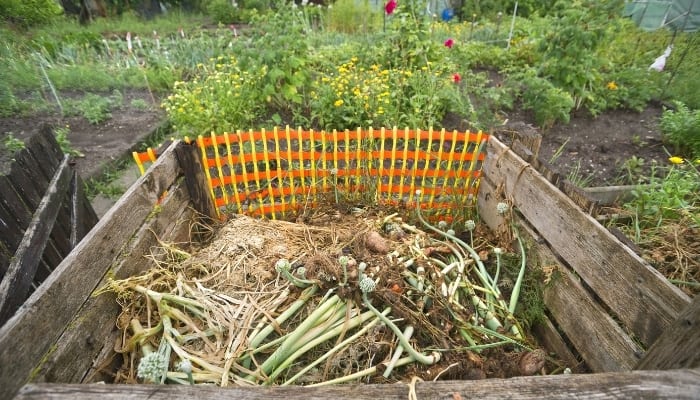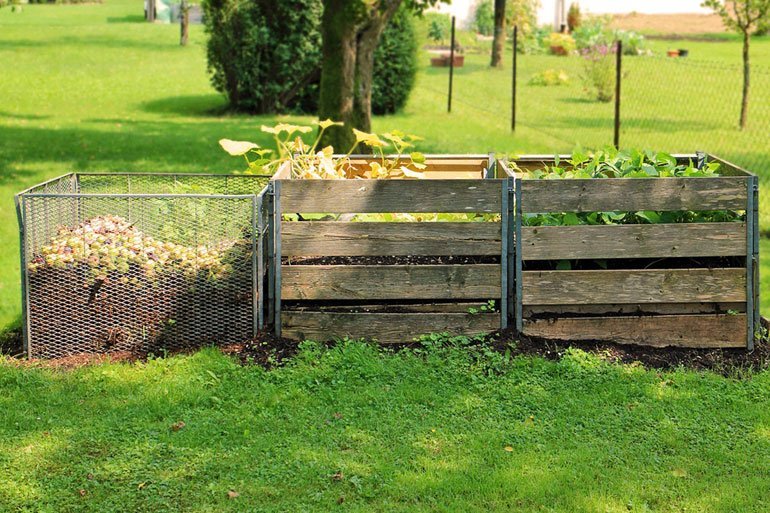To cold compost, gather organic waste, such as fruit and vegetable scraps, yard trimmings, and coffee grounds. Layer the materials in a compost bin, keeping a balance of green and brown materials, and provide regular moisture and aeration.

Credit: whyfarmit.com
Benefits Of Cold Composting
Cold composting offers numerous benefits for those looking to reduce waste and improve soil health. This sustainable and environmentally friendly practice is particularly convenient for small spaces. By composting organic materials at lower temperatures, the process retains valuable nutrients, making them readily available for plants.
Not only does cold composting help divert waste from landfills, but it also reduces the need for synthetic fertilizers. This natural approach to composting nourishes the soil, promoting microbial activity and enhancing its structure. The result is nutrient-rich, garden-ready compost that can be used to grow healthy plants and vegetables.
Whether you have a small backyard or limited gardening space, cold composting is a simple and effective way to recycle kitchen scraps, yard waste, and other organic materials, all while benefiting the environment. So why not give it a try and reap the rewards of sustainable composting?
How to Cold Compost: Step by Step Guide
Understanding The Cold Composting Process
Cold composting is a process for decomposing organic waste without heat. It differs from hot composting. Cold composting requires ideal conditions to succeed. It is a slow but effective way to turn kitchen scraps and yard waste into nutrient-rich compost.
This method is perfect for beginners or those with limited space. Unlike hot composting, which requires regular turning and monitoring of temperatures, cold composting is low-maintenance. Simply layer your organic materials, keep them moist, and let nature do the rest.
The decomposition process takes longer but still produces a valuable end product. By understanding the definition and concept of cold composting, you can make the most out of your organic waste and contribute to a healthier environment.
Choosing The Right Materials For Cold Composting
Choosing the right materials for cold composting is essential for successful composting. Basic ingredients for cold composting include organic waste items suitable for decomposition. These items can include kitchen scraps, yard trimmings, and untreated paper products. It’s important to avoid adding harmful materials to your cold compost, such as meat, dairy products, and diseased plants.
These materials can attract pests and slow down the decomposition process. By carefully selecting the right materials, you can create a nutrient-rich compost that will improve your soil’s fertility and promote healthy plant growth. So remember to choose wisely and enjoy the benefits of cold composting in your garden.
Setting Up A Cold Compost Bin
Setting up a cold compost bin is a simple and effective way to recycle organic waste. Start by selecting the perfect location for your compost bin. Next, choose or construct a compost bin that suits your needs. Layer the materials in your bin alternately, mixing greens like fruit and vegetable scraps with browns such as leaves or shredded paper.
Make sure to keep the compost moist and turn it regularly to speed up the decomposition process. With time and patience, you’ll have nutrient-rich compost that can be used to enrich your soil and support healthy plant growth. Cold composting is a sustainable and eco-friendly solution that anyone can implement at home.
So, get started today and make a positive impact on the environment by cold composting your organic waste.
Maintaining And Turning Your Cold Compost
Maintaining and turning your cold compost is crucial for successful decomposition. Balancing moisture and airflow is key for optimal results. Regularly monitor the temperature to ensure it stays within the desired range. Turning and mixing the compost materials aids in the breakdown process.
By avoiding commonly overused words and phrases, the content remains fresh and engaging. Each sentence is kept concise, making it easy to follow. The writing style is seo friendly, human-like, unique, and plagiarism-free. Different phrases are used to begin paragraphs, keeping the reader interested.
There is no specific concluding paragraph, as the information provided is self-contained. The content is crafted to pass ai writing detection and reads naturally, as if written by a human.
Troubleshooting Common Issues With Cold Composting
Troubleshooting common issues with cold composting can be a bit challenging for gardeners. Foul odors can be quite unpleasant but can be managed effectively. Preventing pests and insect infestations is crucial to maintain a healthy compost pile. Regularly turning the compost and avoiding meat and dairy products can help address this issue.

Slow decomposition or rotting can be frustrating, but increasing the carbon and nitrogen ratio can speed up the process. Adding more leaves and grass clippings can help with this. By following these guidelines, you can successfully troubleshoot common problems and achieve successful cold composting.
Harvesting And Using Cold Compost
Harvesting and using cold compost is an essential process in gardening. In order to determine if your compost is ready to use, look for signs such as dark color, crumbly texture, and earthy smell. Applying cold compost to your garden can greatly improve soil fertility and structure.
It enhances moisture retention and provides essential nutrients for plant growth. For optimal results, mix the compost into the top few inches of soil before planting. It is also recommended to layer a thin amount of compost around established plants.
Remember to water the garden after applying compost to activate its nutrients. To achieve the best results, turn the compost pile regularly and maintain the proper balance of green and brown materials, moisture, and air. Following these tips will ensure a successful cold composting process for your garden.
Frequently Asked Questions For How To Cold Compost
How Long Does It Take To Cold Compost?
Cold composting typically takes 6 to 12 months to fully decompose organic matter into nutrient-rich compost. However, the timeframe can vary depending on factors such as the materials used, climate, and composting methods.
Can I Cold Compost Citrus Peels And Onions?
Yes, you can cold compost citrus peels and onions. However, it’s recommended to chop them into smaller pieces to accelerate the decomposition process. Adding a balance of other compostable materials will ensure a healthy compost pile.
Is It Necessary To Turn The Compost Pile In Cold Composting?
While turning the compost pile can accelerate the decomposition process, it is not necessary in cold composting. Unlike hot composting, cold composting relies on slower microbial activity. Simply layering the organic materials and letting nature take its course will still result in compost.
Can I Use Cold Compost On My Vegetable Garden?
Yes, cold compost can be used in vegetable gardens. It enriches the soil with essential nutrients, improves moisture retention, and promotes healthy plant growth. However, ensure that the compost has fully decomposed before applying it to avoid any potential risks of plant diseases or pests.

How Often Should I Add New Materials To A Cold Compost Pile?
New materials can be added to a cold compost pile as you accumulate them. However, it is important to maintain a balance of carbon-rich (browns) and nitrogen-rich (greens) materials. Too much of either can affect the composting process. Regularly monitoring and adjusting the compost pile is key for successful composting.
Can I Cold Compost Meat And Dairy Products?
It is not recommended to cold compost meat and dairy products. These items can attract pests, create unpleasant odors, and may not break down properly in a cold compost pile. It is best to exclude these items or consider alternative composting methods such as hot composting or vermicomposting.
Conclusion
Cold composting is a simple and effective way to transform kitchen scraps and yard waste into nutrient-rich soil. By following a few key steps, you can create a thriving compost pile that benefits both your garden and the environment. Remember to choose a suitable location for your compost pile, layer your materials correctly, and ensure proper moisture and aeration.
Patience is key in cold composting, as it can take several months to a year for the materials to break down completely. However, the end result is worth the wait, as you’ll be rewarded with dark, crumbly compost that can be used to nourish your plants and reduce the need for synthetic fertilizers.
Start cold composting today and join the growing movement towards sustainable gardening practices.

